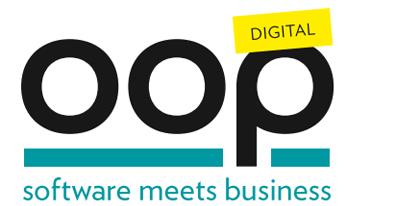- Deutsch
- Contact
- Newsletter

Conference Program
Please note:
On this site, there is only displayed the English speaking sessions of the OOP 2022 Digital. You can find all conference sessions, including the German speaking ones, here.
The times given in the conference program of OOP 2022 Digital correspond to Central European Time (CET).
By clicking on "EVENT MERKEN" within the lecture descriptions you can arrange your own schedule. You can view your schedule at any time using the icon in the upper right corner.
Thema: Domain-Driven Design
- Montag
31.01. - Dienstag
01.02. - Donnerstag
03.02. - Freitag
04.02.
After two decades of being a business software developer, a DDD consultant and an Event Storming aficionado, I started to build a game and had no clue how to.
So I modelled the heck out of the game using Event Storming and implemented it using all the DDD patterns, functional and object oriented architecture patterns and even CQRS & Event Sourcing.
Let me show you how much fun it is to build a game, using everything you know about business software and subsequently, how your business software…
In a world of rapid changes and increasing uncertainties, organizations have to continuously adapt and evolve to remain competitive and excel in the market. In such a dynamic business landscape organizations need to design for adaptability. Designing for adaptability requires understanding the landscape organizations are operating in, identifying patterns of change, applying principles for organizational fitness, and making mindful strategic decisions to adapt change.
Target Audience: Software…
The world in which a software system lives is filled with meaning. The structure, concepts and names that inform the code, its changes and the mental models held by developers are expressions of meaning. The very act of development is an exercise in meaning — it's discovery, its formulation, its communication.
But just because we are immersed in concepts of meaning from an early age, and just because the daily work of software development is about wrangling meaning, that doesn't mean we're…
Within DDD we have the perspective of strategic design where we can split a large-system into multiple sub-domains, each having its purpose and responsibilities, where teams can work in autonomous, clean bounded contexts. One of the most effective ways to define these boundaries is by collaborative modelling with all the stakeholders involved in these domains. Join us were we share war stories about our experience doing collaborative modelling in several companies with 30+ people.
Target…
If we want to make sustainable design decisions for our architecture that are embraced by everyone, the most effective way is to do this collaboratively. It is hard to do because we need to deal with all sorts of group dynamics that cause people to stop sharing what they want, ending up in resistance behaviour from sarcastic jokes, to stopped communication. So how can we make collaborative design decisions better? Join us in this hands-on workshop where we explore different models of decision…
